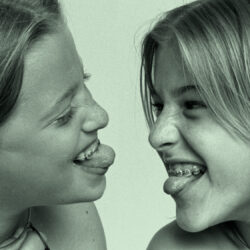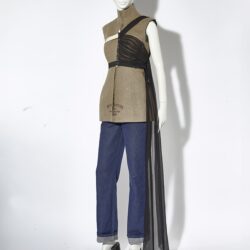Look, Do Touch! The Study Collection as a Tool for Public Outreach

In an aim to close the gap between the museum and its audience, MoMu put together a separate study collection. Unlike the MoMu Collection, you are allowed to study objects up close, a novelty in the heritage sector. Through a variety of projects, MoMu deploys the study collection to reach a broad range of audiences, both young and old. Whether or not you are able to visit the museum physically makes little to no difference.

"Although the new collection is accessible to everyone, we notice that it is now mostly used by creative teams looking for inspiration," explains MoMu librarian Birgit Ansoms. "School groups also often use the collection from a specific angle. Teachers from various courses are easily finding their way to the collection nowadays. What makes the collection special is that you study it in our reading room, which means that you can combine it with research in the library collection. The combination of objects and literature is truly an added value."
Fashion and identity
One way to appeal to a wider audience is 'Identi(time),' a project aimed at secondary school students. Using questions, statements and assignments, a guide teaches young students about the impact of fashion on our identity. Ansoms: "Since the museum's reopening, we have hosted quite a number of groups in the library. Thanks to those positive experiences, the project is becoming more widely known."
Due to its success, the project was expanded this year with a lesson pack linked to attainment targets. "This enables teachers to reflect on these topics in class before or after their visit," Ansoms states. "We leave them completely free to choose what fits into their lessons. They really appreciate the fact that they can discuss social themes such as identity or sustainability through clothing."
In order to reach a more diverse audience in the future, MoMu is currently working on a formula tailored to OKAN and NT2 school groups. This will focus mainly on cultural identity and learning Dutch.

Reminiscence suitcase
Next to projects aimed at young people, there are also initiatives for residents of residential care centres. In cooperation with Expertisecentrum Dementie Vlaanderen and ORION, MoMu has recently launched a reminiscence suitcase. "Retrieving memories is very valuable for people with dementia. Because of its specific content, the suitcase is a tool for creating connection and initiating conversations," says Leen Borgmans (Public Outreach & Communication). "It's also a great trigger for dialogue and connection for other residents."
Borgmans continues: "To appeal to as many residents as possible, we filled the suitcase with textile accessories from different materials. It also contains items that carry specific scents. As such, we can stimulate all the senses. We also included knitting cast-ons in the suitcase. If you wish to do so, you can even continue knitting."
"To reinforce the visual aspect, we selected excerpts from old magazines," Ansoms says. She filled the suitcase with magazines and posters from the library collection. "Maybe they recognise old ads and campaign images. Or they remember graphics from the past. The images also feature fashion from that time period."

Pattern-makers
To increase public involvement in research, the library also organises pattern-a-thons. During those events, participants create patterns from objects in the study collection. Specific prior knowledge is not required, meaning anyone can attend the sessions. Afterwards, the patterns are digitised and shared on Wikimedia Commons, where anyone can access them.
"As such, we want to create a database that can offer inspiration to designers, TV and theater makers or people who want to make something themselves," states Natalie Ortega of scientific partner University of Antwerp.
"The patterns are also important for the conservation and restoration of the objects. If a particular piece is in bad condition, it is very important to know and be able to cut the missing pattern part."
Future plans
In the future, we want to further expand the collection to make it more polyphonic. For example, we want to actively collect and document the heritage of new Antwerp residents. In order to do so, we want to collaborate with different partners in the city of Antwerp.
In addition to a database of objects, you can discover a series of stories on the website of the study collection. These tell the story of fashion from different decades of the twentieth century. You can read the stories here.





